Explore all the past issues of the Beyond Penguins and Polar Bears cyberzine!
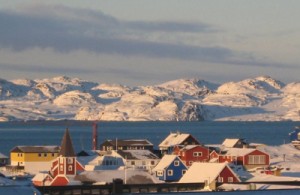 |
A Sense of Place Issue 1, March 2008 | Place and Location are two of the five themes of geography and a natural starting point for a study of the Arctic and Antarctica. Location answers the question, “Where am I?” while the study of place asks, “What kind of a place is it?” and, “How does this place connect to my hometown?” This issue of Beyond Penguins and Polar Bears examines how you can introduce the Arctic and Antarctica and use science, geography, literacy, and technology to help your students compare and contrast these two dramatically different areas as well as their own home. Get ready for an adventure as you and your students develop your polar sense of place! |
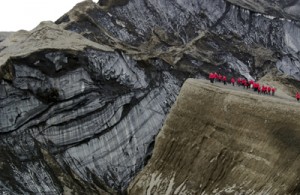 |
Learning From the Polar Past Issue 2, April 2008 | Everyone loves a good mystery. Gathering evidence and piecing together clues is exciting! The same is true for science and reading when lessons are presented within the context of finding clues and drawing conclusions. In this issue, we explore how to use fossils and artifacts (scientific clues) to learn about the polar regions’ past. Learn about polar dinosaurs, fossil formation, and how KWL charts can support evidence-based reasoning. Use the lessons to help your students learn about fossils, make inferences, and use context clues to define new vocabulary. In this game of “clue,” everyone wins! |
 |
Polar Patterns: Day, Night, and Seasons Issue 3, May 2008 | In this issue, we highlight ways to teach about the extremes in day and night and seasons in the Arctic and Antarctica. Students can observe patterns in nature: daylight, temperature, and changes in the plants and animals around them. Integrate science and literacy through investigations of cause/effect relationships. Help your students compare and contrast seasonal changes around the world with what they observe in their hometown. Finally, learn about the aurora and use this beautiful phenomenon as inspiration for art and poetry. |
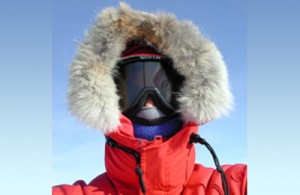 |
Weather and Climate: From Home to the Poles Issue 4, June/July 2008 | What’s the weather like today? The question is often heard in elementary schools, from morning meetings to science units. In this issue, we highlight ways to move from a study of the weather at home to the weather of the polar regions. We discuss how hands-on activity helps students build vocabulary, and how to provide extra support for English Language Learners. Through activities, reading, and discussion, students and teachers can compare the climates of the Arctic and Antarctica and learn about the effects of climate change. |
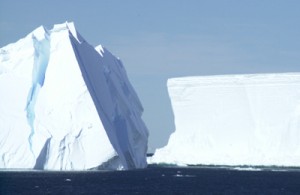 |
Water, Ice, and Snow Issue 5, August 2008 | Did you know that the water cycle includes ice and snow? Every elementary student learns about this cycle, yet water storage in glaciers, ice sheets, and snow is often excluded. In this issue, we’ll examine what the polar regions can teach us about the water cycle and the states and changes of matter. We’ll trace the water cycle through the many forms of water, ice, and snow found in the polar regions and will highlight lessons that provide hands-on experiences with these forms. Science notebooks – permanent records of learning and tools for integrated literacy and science – are the literacy focus of the issue. |
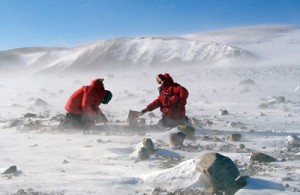 |
Rocks and Minerals Issue 6, September 2008 | Rocks and minerals have fascinating stories to tell about the processes that have shaped our earth throughout its history. In this issue, we focus on the basic characteristics of rocks and minerals, the types of rocks, the rock cycle, and the specimens found in the polar regions. We highlight lessons that allow students to observe rock and mineral specimens, perform classification exercises, and read to develop their content knowledge. This month’s Feature Story, “Reader of the Rocks,” focuses on the discipline of geology and provides an opportunity for students to practice determining importance in nonfiction text. |
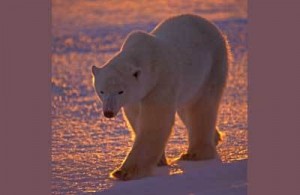 |
Energy and the Polar Environment Issue 7, October 2008 | In this issue’s Science and Literacy department, we discuss the Sun’s role in warming Earth, the albedo (reflectivity) of Earth’s diverse surfaces, and how the decline of Arctic sea ice is affecting Earth’s energy balance. Science lessons introduce the concepts of solar energy, reflection, and absorption to elementary students. In our Across the Curriculum department, we focus on another common concept: natural resources. We provide an overview of the natural resources and energy sources found in the polar regions. Lessons allow students to develop the concepts of natural resources, energy sources, and energy efficiency. |
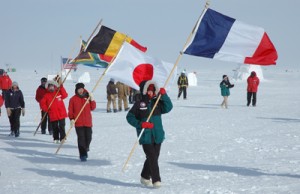 |
Polar Festivals Issue 8, November 2008 | Looking for an exciting way to incorporate polar science into your curriculum? A polar festival might just be your answer! Festivals are flexible, informal learning events that engage students as they learn science through hands-on activity. In this month’s issue of Beyond Penguins and Polar Bears, discover planning guides, suggested activities, and ways to incorporate literacy into your event. We hope you’ll plan your own special event and share it with us! |
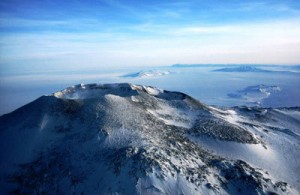 |
Earth’s Changing Surface Issue 9, December 2008 | Earth’s surface is always changing, and the polar regions are no exception. Glaciers slowly scour the landscape, while the fierce katabatic winds of Antarctica create unusual rock sculptures. Just off the coast of Antarctica, Mt. Erebus erupts almost daily. In this issue, we highlight lessons in which students model the forces that shape and change Earth. Our Feature Story, “The Heart of Erebus,” teaches students about Antarctica’s active volcano while the associated templates provide support as they identify facts, ask questions, and make connections with nonfiction text. A Walk Through the Earth: Volcanoes and Earthquakes (5.9MB) A Walk Through the Earth: Volcanoes and Earthquakes (5.9MB) |
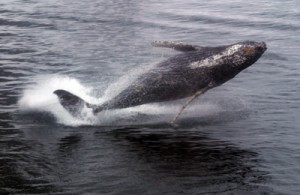 |
Polar Mammals Issue 10, January 2009 | What is a mammal? And what kinds of mammals live in the polar regions? This issue, co-produced with the American Museum of Natural History, explores the mammals of the polar regions and the adaptations that help them survive in harsh environments. Learn about Ross MacPhee’s research on ancient woolly mammoths, and discover how bookmaking can motivate students and improve reading comprehension. Read our Feature Story about arctic wolves, and help your students develop important listening skills. Finally, integrate art activities to teach about camouflage and habitats. Why Polar Bears Don’t Eat Penguins (4.5MB) Why Polar Bears Don’t Eat Penguins (4.5MB) |
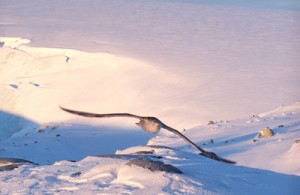 |
Arctic and Antarctic Birds Issue 11, February 2009 | Sure, you’ve heard of emperor penguins…but what about giant petrels, skuas, or sanderlings? This issue, co-produced with the Cornell Lab of Ornithology, explores the amazing birds that live in or migrate to the polar regions. Read about how birds stay warm, or get an inside look at an expedition to record bird and other animal sounds in the high arctic. Discover professional resources about social networking and engaging boys in reading. Our featured lessons help you use the subject of birds to teach simple physics concepts. Birdwatcher’s Delight: Birds and Inquiry Learning (12MB) Birdwatcher’s Delight: Birds and Inquiry Learning (12MB) |
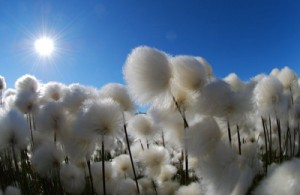 |
Polar Plants Issue 12, March 2009 | Did you know that Antarctica is home to two species of plants? At the opposite end of the earth, over a thousand plant species grow on the Arctic tundra. And that’s not counting the many species of algae and lichens that are not classified as plants. In this issue, we highlight high quality resources for teaching plant classification, life cycles, and adaptations. Enrich your practice with our professional resources and discover science lessons and informational text to engage your students. The Lowdown on Climate Change (8.6MB) The Lowdown on Climate Change (8.6MB) |
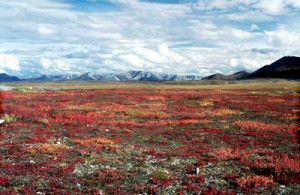 |
Tundra: Life in the Polar Extremes Issue 13, April 2009 | At first glance, the polar regions may seem barren and lifeless. Yet the tundra – found in both the Arctic and Antarctica – is home to a surprising diversity of life. In this issue, explore the tundra and how it can illustrate ecological concepts, relationships, and changes. Consider common misconceptions and strategies for formative assessment. Learn how to engage girls in science and help students write research reports. Discover informational text, children’s literature, and lesson plans for classroom use. What’s For Dinner? Teaching Arctic Food Chains (13.5MB) What’s For Dinner? Teaching Arctic Food Chains (13.5MB) |
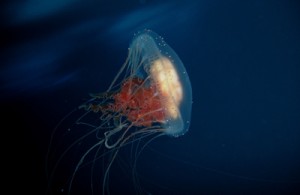 |
Polar Oceans Issue 14, May 2009 | At the ends of the Earth lie the Arctic and Southern Oceans – mysterious, largely unexplored, yet vital in driving global circulation patterns and climate. In this issue, explore these oceans, their characteristics, and the species that call them home. Discover ways to integrate hands-on science and literacy, performance-based assessment, and informational text about blue whales. Engage students by creating ocean murals or classroom podcasts. Of course, there’s much more – so dive in and explore! Deep Sea Thinking: Exploring the World’s Ocean (12MB) Deep Sea Thinking: Exploring the World’s Ocean (12MB) |
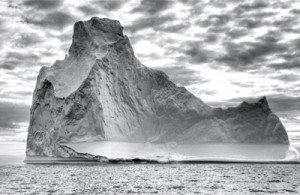 |
Icebergs and Glaciers Issue 15, August 2009 | The enormous size of icebergs and glaciers can spark student interest – and questions. How can huge icebergs float? How do massive glaciers move? In this issue, discover resources to help your students learn about icebergs and glaciers, develop a basic understanding of density and buoyancy, and practice reading comprehension strategies like predicting and visualizing. Download our latest podcast or learn how iPod Touches can bring technology to every student. And that’s just the “tip of the iceberg” – there’s much more to explore! Density in the Making: The Changing Face of Polar Glaciers and Icebergs (10.3MB) Density in the Making: The Changing Face of Polar Glaciers and Icebergs (10.3MB) |
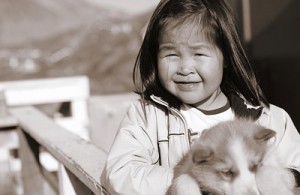 |
Peoples of the Arctic Issue 16, October 2009 | While the Arctic may seem bleak and inhospitable, indigenous people have successfully lived there for thousands of years. In this issue, learn how the Inuit of northern Canada, Inupiat of arctic Alaska, and Sami of northern Europe survive in a harsh environment. Discover lessons, informational text, and children’s literature that introduce your students to these groups and their cultures. Learn how to promote metacognition, connect with other classrooms, and embrace your students’ diversity through Culturally Responsive Teaching. Storytime! The Boy Who Found the Light (10MB) Storytime! The Boy Who Found the Light (10MB) |
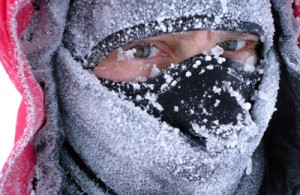 |
Keeping Warm Issue 17, December 2009 | Winter brings cold temperatures to the Northern Hemisphere, leading us to consider ways to keep warm. In the polar regions, this question is important year-round! In this issue, explore physical science concepts, such as heat, conductors, and insulation, and apply this knowledge to the animals and people in the Arctic and Antarctica. Explore adaptations and behaviors through hands-on science lessons, informational text, and Readers Theater scripts. Use formative assessment and discrepant events to target student misconceptions about heat. We know your students will quickly “warm up” to science with these ideas! Warm Blankets and Cold Breezes: Misconceptions About Heat and What To Do About Them (9.9MB) Warm Blankets and Cold Breezes: Misconceptions About Heat and What To Do About Them (9.9MB) |
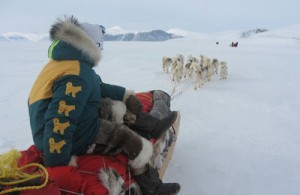 |
Polar Explorers Issue 18, February 2010 | Did you know that even after 100 years, debate still surrounds the question of who reached the North Pole first? Or that a 19-year-old Boy Scout accompanied Admiral Richard E. Byrd to the Antarctic in 1928? In this issue, learn about polar explorers, past and present. Incorporating their stories into your curriculum can engage students and meet science, social studies, geography, and literacy standards. From the races to the poles of the past or the robot-assisted expeditions of today, there’s always something exciting to discover! I’ve Tried Everything! Strategies for Working With Kids With Attention Disorders (9.8MB) I’ve Tried Everything! Strategies for Working With Kids With Attention Disorders (9.8MB) |
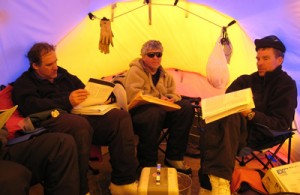 |
Science at the Poles Issue 19, April 2010 | In many ways, science in the Arctic or Antarctica is unlike research anywhere else on Earth. Where else would you find scientists camping on floating sea ice or rappelling down the side of a glacier? In this issue, learn about the tools and technologies scientists use to study the land, ice, ocean, atmosphere, and living creatures of the polar regions. Students can also learn about the day-to-day life of a scientist working at the South Pole and plan their own research expedition. Including a unit on the logistics of polar science is great way to teach students that while the locations, tools, and technologies may differ, the nature of science remains the same. Of Snow Forts and Frostbite: Learning to Work (and Play) at the Poles (16MB) Of Snow Forts and Frostbite: Learning to Work (and Play) at the Poles (16MB) |
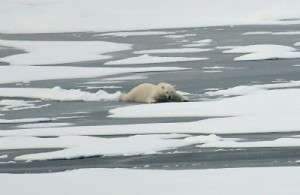 |
Climate Change and the Polar Regions Issue 20, June 2010 | Even though climate change and its effects are complex concepts for Grades K-5 learners, elementary teachers can still play an important role in preparing their students to become climate literate in later years. In this issue, we highlight strategies and resources that help teachers lay the foundations for climate literacy. Observing weather phenomena, identifying patterns, and developing an appreciation for the outdoors will all build the skills and habits of mind needed for learning more complex concepts in the middle and high school years. No Gloom, No Doom: Teaching About Climate Without Scaring Your Students. (11.8MB) No Gloom, No Doom: Teaching About Climate Without Scaring Your Students. (11.8MB) |
Copyright May 2008-2011 – The Ohio State University. This material is based upon work supported by the National Science Foundation under Grant No. 0733024. Any opinions, findings, and conclusions or recommendations expressed in this material are those of the author(s) and do not necessarily reflect the views of the National Science Foundation. This work is licensed under an Attribution-ShareAlike 3.0 Unported Creative Commons license.

